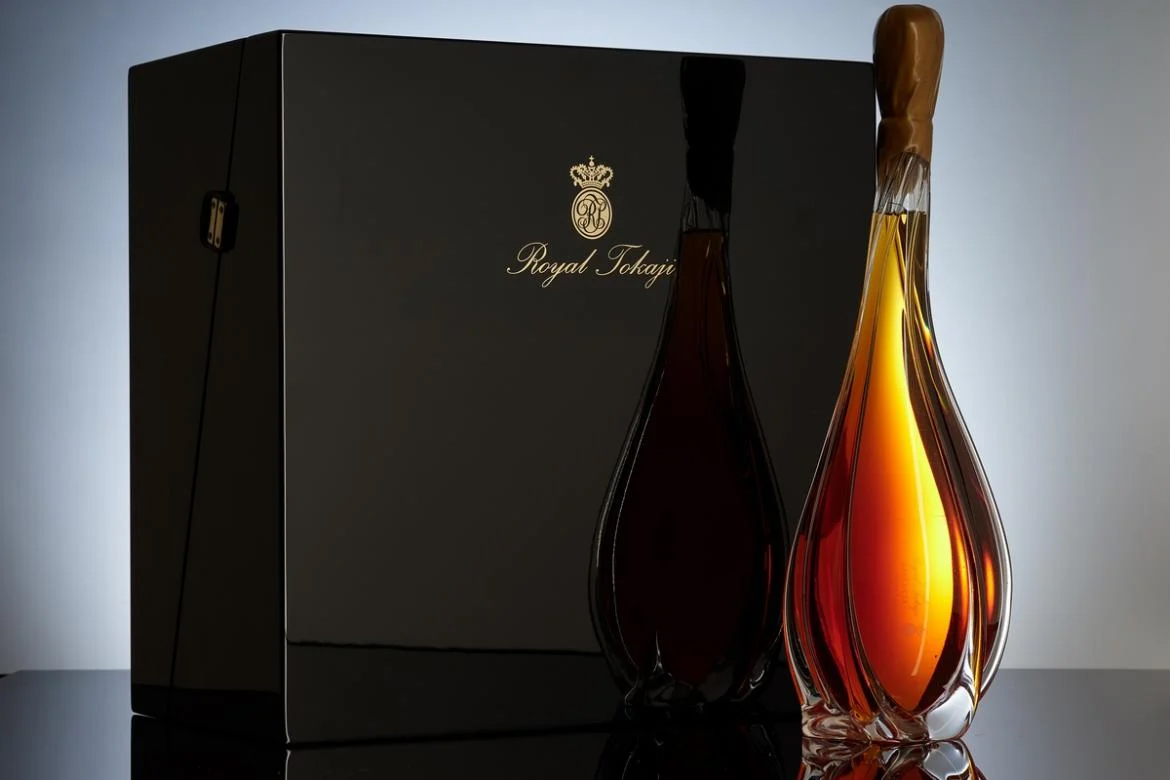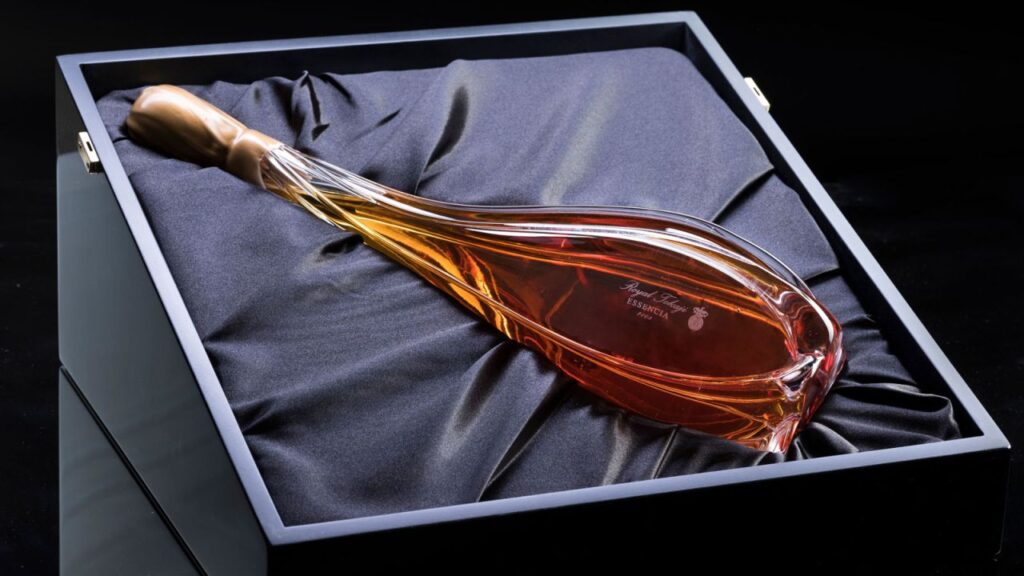World’s Most Expensive Wine

Sure, good wine comes at a price, but $40,000 seems pretty expensive. However, Hungarian winemaker, Royal Tokaji, says their limited-edition 2008 Essencia Decanter is worth it.
Only 20 examples of this unique 1.5 litre magnum designed by Hungarian artist, James Carcass, exist, 18 of which were released last year.
Essencia 2008 Magnum was described at launch as “the most expensive wine in the world”, and while that claim is difficult to quantify, the Essencia 2008 Magnum was the most expensive wine sold in 2019. Each carafe comes in a black box with a switch that lights up the bottle and is specially mouth-blown, meaning no two are the same. Around 11 bottles of have already been sold, so Royal Tokaji will likely sell the remaining 7 bottles before the 2300 wine’s expiry date.
The dessert wines produced here rely on the botrytis cinerea mold known as “noble rot”, which causes the grapes on the vine to dry out and shrivel up, looking like brown raisins.
Essencia uses only the best aszú grapes and is made entirely from the juice of the aszú berries (other wines produced in the region have base wine added to dilute their sweetness). Tourists can arrange a private tour of the winery, about a two-and-a-half-hour drive from Budapest, to taste it.
“Essencia in itself is a miracle of nature,” says London-based Hungarian wine expert Orsi Szentkiralyi. “It was very labor-intensive and required years of painstaking work in the cellar… It has only a few degrees of alcohol but lots and lots of natural sweetness. It is so rich that it is usually served on a spoon rather than a glass.”
Essencia can only be produced in years when the climatic conditions for Botrytis are more or less perfect. 2008 was a particularly impressive year. A bottle of centiliter wine requires around 20 kilogrammes of grapes reduced to aszú berries, usually with an alcohol content of around 3%.

“When we bottle Essencia, the winemaker always makes the decision,” says Zoltan Kovacs, general manager of Royal Tokaj Winery in the Tokaj district of Mád… It can take three years, four years or even after 10 years. This [2008] Essencia was bottled after eight years of aging. This is a somewhat unusual type of Essencia, as it has a higher alcohol content – around 4%.” This produces a clear and extremely intense aroma with hints of honey, apricot, and tea, almost unbearably sweet.
The liquid is so viscous and syrupy that it is usually drunk by the spoonful. It’s so mouth-watering that it’s hard to imagine taking a few more sips without feeling light-headed
Although the 2008 Essencia has already been released, it is the uniqueness of this particular set that makes this decanter more valuable than the standard bottle. Royal Tokaji must obtain special permission from the Hungarian government to serve Essencia in 1.5-liter containers – current law only allows a maximum capacity of 0.
5 litres.
“It’s unique,” said Charlie Mount, managing director of Royal Tokaji. “I don’t know if we will ever be able to repeat the same mistakes.” The design of this unusual decanter was inspired by wine “slowly dripping from individually picked as berries”.
Once finished, the decanters are shipped to Portugal where they are scanned and fitted with personalized stoppers before returning to Royal Tokaj where they are filled and sealed by hand.
According to the Royal Tokaji team, founded in 1990 by British wine historian Hugh Johnson, one of the company’s greatest successes is having Hungarian wine talked about again in the world.
“This project is the symbol of one of Hungary’s biggest exports,” said Mount. “Hungarians are very proud of the diversity of wines produced in the country… They make a wide variety of wines. But I think Tokaj wines have this mystery for foreigners.
It is even mentioned in the Hungarian national anthem.”
Szentkiralyi agrees with this sentiment and points out that the country still has a lot of untapped potential in terms of the wine industry. “A long wine-making tradition, pleasant climate, and variety of wine styles make it a wonderful wine-producing country, but most of the product is still consumed locally,” she said.
Although the range has put Tokaj wines, and even Hungarian wines, back in the limelight, its appeal, especially that of Essencia, dates back centuries. “Even in the early 20th century, Tokaj was the most expensive wine in the world,” says Mount. “Doctors used to prescribe it to their patients. If you were lucky enough to afford it, you would prescribe one teaspoon of Essencia in the morning and one teaspoon in the evening.”
“Tokaj’s famous sweet wine has been enjoyed by wealthy people all over the world for centuries,” says Szentkiralyi. “Essencia is a very unique product that may have been a royal privilege, but anyone can seek out and enjoy a glass of Hungarian wine and witness the quality.”
“Certainly expensive,” Mount admits. “But true wine collectors spend many times [$40,000] a year to build the perfect wine cellar.
While all rare vintages increase in value over time, Essencia offers a particularly attractive shelf life due to its high sugar and acidity (2300). Years are certainly worth more.
Editor’s Note: This publication first appeared in worldtitbit.com. Photo credit goes to fortune.com.



Leave a Reply